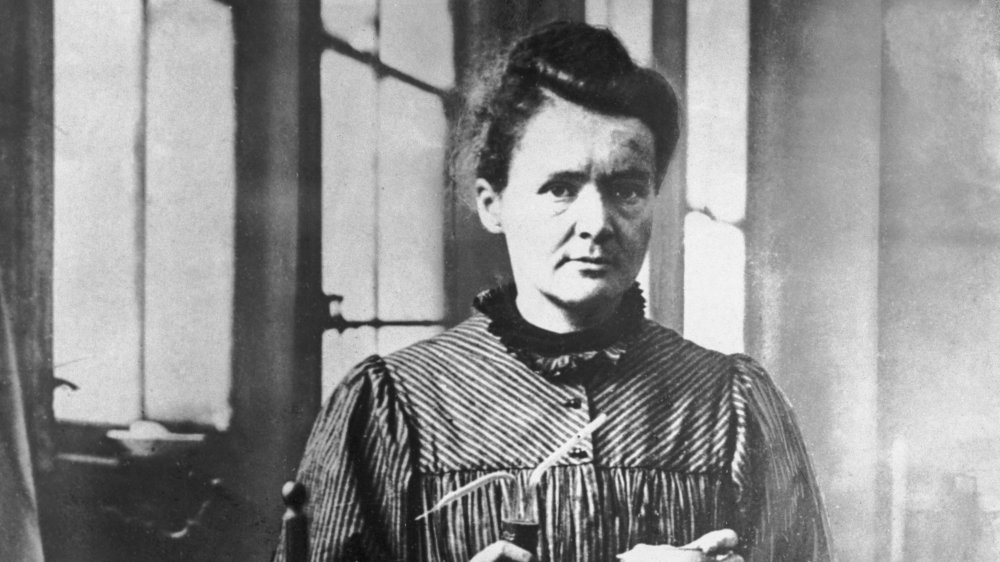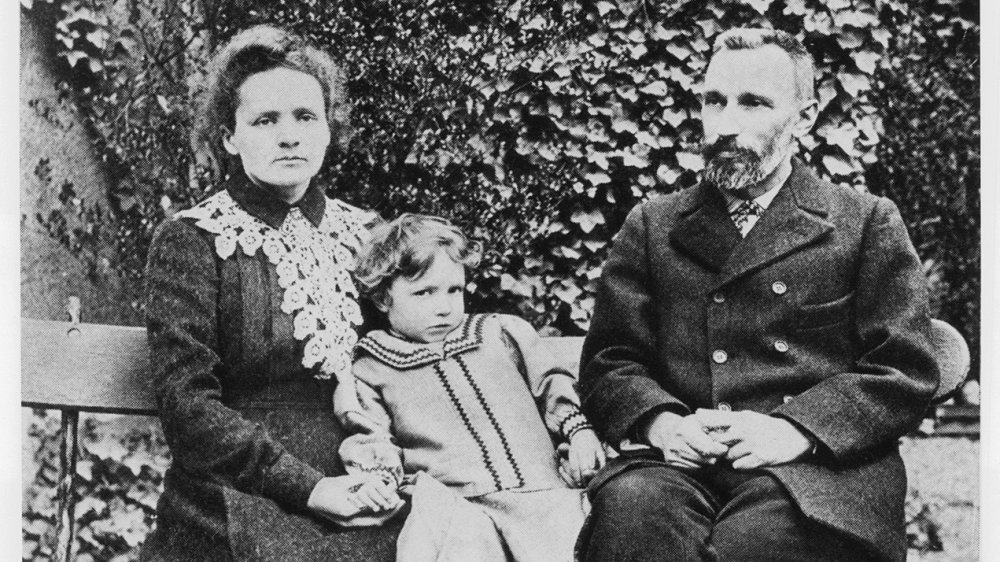The Reason Marie Curie's Casket Is Made Of Lead
Marie Curie was a brilliant scientist who helped expand our knowledge of radioactivity. Since she and her husband Pierre were still trying to understand radioactivity, they didn't take the same precautions used today. So when Curie died, her body, still riddled with radioactive atoms, had to be buried safely.
Curie is buried in a casket made of lead to contain the radiation, but according to The Journal of the British Society for the History of Radiology, people didn't know Curie's coffin was made of lead until her body was exhumed in 1995.
The French government wanted to move the Curies' bodies to the Pantheon to celebrate them as French history icons. When they approached the grave, they detected traces of radium and polonium, the elements Curie studied. At first, the workers came across a wooden coffin, but once they opened it, they saw an intact lead casket inside. Science Alert reported the lead was nearly an inch thick.
The authorities decided to move both Curies to wooden caskets for burial at the Pantheon. Scientists, said The Journal of the British Society for the History Radiology, did not think the trace amounts of radium found on both Curies could harm anyone else, as Marie already limited exposure in later years.
Even their furniture is radioactive
While Curie's body had some radiation, it was believed she lived long enough for most of the radium to pass through her body, wrote The Journal of the British Society for the History of Radiology. Her husband, however, died young so his remains were much more radioactive. He wasn't buried in a lead casket, possibly because he died before the development of protective measures against radiation.
But Marie and Pierre's notes are a different matter. Gizmodo wrote the Curie's personal effects, from scientific notes to furniture to cookbooks, require special handling because they're still radioactive more than a hundred years later. France's Bibliotheque Nationale, or National Library, keeps Curie's notes in lead-lined boxes. If you want to go handle their possessions, you need to wear protective clothing.
At the time the Curies studied polonium and radium, there was little understanding about radiation. Companies even used them in watches and made their workers sick. So it's no surprise that the Curies and their notes still hold traces of radiation and why even when she died, Marie Curie was buried in a casket made of lead.

